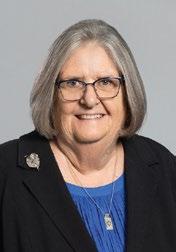




By Joy Stephenson-Laws, Managing Partner
Imagine your hospital negotiating team has just successfully closed a contract renewal with a commercial insurer, securing a promising headline rate increase of around 6–8 percent. Spirits are high, congratulations are exchanged, and the deal feels like a genuine victory. Fast-forward six months: your finance team is baffled as net commercial yield remains flat or even drops. What happened? The fine print—the often-overlooked
clauses buried deep within the contract—has quietly stripped away those projected gains. Today, insurers have strategically shifted negotiations away from easily noticeable rates and toward less transparent contract provisions. Hidden expansions in audit rights, prior-authorization requirements, and site-neutral payment rules routinely erode expected margins. In this article, we’ll explore exactly how these hidden clauses operate, why insurers are increasingly relying on
them, and what practical strategies hospitals can implement to protect their revenue.
1. The Hidden Clauses Doing the Real Damage
Unlimited Audit Rights: The Evergreen Trap Not long ago, audit look-back periods were routinely limited to about 24 months. Today, insurers frequently include language that grants them unlimited audit rights—phrases such as “Payor may
reopen any claim at any time if evidence of overpayment exists.” With advanced AI-driven auditing tools, insurers now easily comb through years of claims in minutes, targeting high-value claims for recoupment. According to recent industry data, hospital outpatient audit denials spiked an alarming 84 percent in 2024 alone (MDaudit, 2024).
Prior authorization (PA) once targeted primarily high-cost elective procedures or imaging. Today, it increasingly includes routine inpatient admissions, infusion treatments, and more. The operational burdens—extra case-management hours, delayed patient care, and increased administrative friction—are challenging enough, but the financial implications can be devastating. Newer contract language often denies payment outright if authorization is not secured, regardless of medical necessity. Recognizing this escalating issue, the U.S. Department of Health and Human Services recently pushed insurers publicly to streamline PA processes, an acknowledgment that the current system has become untenable (HHS, 2025).
Site-Neutral and “Lower-of” Payment Provisions: A Race to the Bottom
Taking cues from CMS’s increasing emphasis on site-neutral payment policies, commercial payors have eagerly adopted similar approaches. These clauses ensure the hospital receives only the lowest payment available for a given procedure, whether that’s the rate for a hospital outpatient department, an ambulatory surgery center (ASC), or even a physician’s office. Facility fees for virtual care, once reliable sources of revenue, are also vanishing. The Kaiser Family Foundation notes that federal policy continues to reinforce this troubling trend (Levinson et al., 2024).
Insurers haven’t stumbled upon these strategies by chance; their dominance is a product of specific economic and regulatory pressures:
First, medical-loss ratios are rising, squeezing insurers’ profit margins and prompting intense shareholder pressure to cut provider payments. Second, federal policy developments—like extensions of the hospital-at-home waiver and expansions of site-neutral payments by CMS—give commercial payors convenient regulatory cover to justify these harsh contract terms. Third, insurers have invested heavily in AI and analytics tools, giving them superior data capabilities to instantly
detect and act on potential overpayments. Finally, providers themselves are stretched thin. Staffing shortages and operational strain mean hospitals have fewer resources to scrutinize every subtle change insurers slip into contracts or manuals.
One effective strategy to counteract insurers’ tactics is to clearly illustrate their financial impact. Before signing any agreement, hospitals should perform scenario modeling that layers these hidden contract clauses onto the initial rate increase. For example, suppose audit recoupments increase from 0.2 percent to 1.5 percent of high-value claims, prior-authorizations expand dramatically from 15 percent to 60 percent of inpatient stays, and site-neutral adjustments jump from 10 percent to 40 percent of outpatient services. For a hospital with around $3 billion in commercial revenue, these seemingly small clause shifts can collectively eliminate around $90 million in annual gains—more than wiping out an 8 percent rate increase. When presented clearly, this financial reality dramatically shifts negotiations, changing the conversation from vague contract terms to concrete financial impacts.
Understanding the challenge is the first step; the next is acting decisively to defend your hospital’s revenue:
Finality for Clean Claims: Set firm audit deadlines, limiting insurer look-backs to 24 months unless fraud is involved.
Automatic Authorization: Establish that insurers’ failure to meet statutory prior-authorization timelines automatically constitutes authorization.
Mutual Policy Agreement: Ensure any changes to payor manuals or internal policies require your explicit, written agreement.
Carve-outs for High-Acuity Services: Exclude critical, high-value services such as trauma care or transplant programs from site-neutral reductions.
Value-Based Negotiations: Exchange participation in select upside-only risk models for reduced audit scope or softer prior-authorization requirements.
Real-Time Analytics: Use advanced analytics to spot payment-denial patterns early, giving you concrete evidence for future renegotiations.
Consider a Midwest health system facing renewal with unlimited audit rights and a burdensome recoupment clause that could have cost $22 million annually. By negotiating strategically— agreeing to participate in an upside-only bundled payment arrangement—the hospital secured significant concessions, limiting audit periods to 24 months and recoupment strictly from future payments. The result was the preservation of around $19 million annually.
Navigating insurer negotiations effectively often requires external support. Specialized outside counsel and analytics firms provide valuable resources, including comprehensive clause databases, historical denial benchmarking, and critical leverage through the credible threat of legal action. Importantly, these experts also translate complex contract terms into practical workflows, ensuring hospital staff consistently apply contract wins from day one.
Hospitals that begin strategic preparations today will be better positioned tomorrow. Consider creating a cross-functional “negotiation SWAT team”—combining expertise from finance, revenue cycle management, legal, and clinical leaders—to regularly review and strategize around emerging insurer practices. Additionally, evaluate existing contracts to prioritize renegotiation efforts, focusing on those with the highest exposure to harmful clauses. Finally, actively engage in public policy advocacy, influencing state and federal discussions around prompt-pay laws, prior-authorization reforms, and site-neutral payment policies.
While rate increases make headlines, contract clauses ultimately determine profitability. Hospitals that proactively address hidden insurer tactics with clear analytics, strategic legal support, and comprehensive preparation will transform apparent contract wins into real financial success. Arm your team with data, strategic clarity, and operational discipline, and you’ll ensure that next year’s contracts deliver genuine value rather than simply empty promises.


This quarter’s Spotlight is on Managing Attorney, Barbara Skier.
You recently celebrated 50 years as a Registered Nurse — an incredible milestone. How has your nursing background shaped the way you approach your work in healthcare litigation?
I was blessed with many key people along the way, and I cannot express enough gratitude for the guidance and support that shaped my nursing career. I began as an emergency room nurse and managed the paramedic trauma line at Huntington Memorial Hospital. From there, I trained at UCLA as a cardiac/pulmonary nurse specialist and later moved to Cedars, where I worked with leaders on the development of the Swan-Ganz catheter. I also worked with Kaiser, first as a nurse and then as an advocate for the members, eventually becoming director of member services. That experience sparked my interest in the legal field and gave me the knowledge I needed to strengthen my management skills.
Marking 50 years since becoming an RN is no small feat. Looking back, what impact has that chapter of your life had on your personal or professional journey?
When I was in high school, my counselor told me I would not amount to much and suggested I consider becoming a hairdresser. In the late ’60s, that was not exactly meant as a compliment. During my very first week on the nursing floor—wearing the black stripe on my nurse’s cap, which signified I had officially become a Registered Nurse—I was assigned that same counselor as my first patient. I told her she could request another nurse if she felt I was incompetent. Instead, she told me she was “so proud.” I didn’t quite buy it.
As for my career path and what ultimately led me to law, I was always driven to pursue new and different ideas. While completing my master’s program in nursing, a friend introduced me to the legal field, and that sparked the next chapter of my journey.
Was there a particular moment or turning point when you decided to move from nursing into law? What inspired that shift?
The turning point came when I took a criminal law class while completing my master’s in nursing, and I was immediately hooked and finished my law degree. I hadn’t planned to practice law—I hadn’t even studied for the bar—but with encouragement I took it and passed on my first try. That path led me to defend cases for large insurance carriers. I later returned to Kaiser as director of Member Services, and for a short period I conducted audits for the State of California under the Knox-Keene Act to understand it more closely. I was then invited to join a major bad faith litigation team, where we won $125 million in punitive damages against Aetna. After that, I met Joy Stephenson and joined SAC. Joy has a way of pulling in what I like to do, bringing together my medical knowledge, medical plan knowledge, and legal expertise to manage cases.
Having reached such a major milestone, what advice would you give to someone just beginning their career — in nursing, law, or otherwise?
Follow your passion. Don’t be afraid to take risks, and learn as you grow. I still learn something new and fresh every day—even with today’s ever-changing technology.
Looking back across both your nursing and legal careers, what core values have remained consistent throughout your journey?
Educate whenever possible. We are only as good as our ability to see from both sides of the coin, so it’s important to always remain open to the other perspective.
What is your area of expertise within SAC?
I have become more of a consultant, sharing and teaching as much as I can from my career experi-
ence. Within the firm, I am considered the Medicare and Medi-Cal expert.
What one piece of sage advice can you offer to our clients that can help them in the future?
Pick your battles. There are too many to take on all at once, so create a plan for which ones matter most. Then take them on and fight for your just cause.
Since the last time we caught up with you, can you talk about a recent success story of yours?
The development of a strong team. Our team is learning, adapting, and able to reverse decisions quickly and successfully. I could not have managed without the wonderful individuals at SAC.
Do you have any hobbies or interests outside of work?
I enjoy arts and crafts, as well as learning about the healing properties of plants and ointments.
Do you have any charitable causes that interest you and events you have participated in recently?
I support the American Cancer Society.
Do you have family and/or pets you’d like to tell us about?
I have two wonderful children, three granddaughters, two dogs, and a cat. My sister lives in Burbank and has been a great support—always offering me a place to stay or even a companion to sail the seas.
Do you have any guilty pleasure television shows, movies or other activities to tell us about?
I seem to get hooked on reality TV shows—they may be mind-numbing, but they’re laughable. I also read a lot of books.
What are your favorite foods? Colors? Other favorites?
My favorite food is lobster, my favorite color is blue, and I enjoy fine art theater.
October 20–22, 2025 | AAHAM 2025 Annual National Institute
Hilton Baltimore Inner Harbor
The ANI is the premier national conference for revenue cycle professionals, and our firm will be strongly represented this year.
Attorneys Ken Dusold, Mallory McTarnaghan and Lauren Miller will discuss the history and future of noncontracted payors, EMTALA, ERISA and the No Surprises Act, highlighting recent court arguments and strategies moving forward.
Co-Managing Partner Rich Lovich and Partner Chuck Acquisto will lead a session on post-appeal recovery, litigation tactics and contract interpretation.
Rounding out the program, Partner Marcus Morrow will share his expertise on Blue Card program strategies. Together, our attorneys are helping shape the national conversation on healthcare revenue cycle management.
For more information visit: https://aaham.org/page/2025ANI
All articles are written by the SAC Litigation team. The SAC Litigation team includes attorneys, nurses and physicians with extensive experience in all areas of law related to healthcare matters. Additionally, SAC partners hold legal advisory positions with healthcare organizations and sit on the boards of numerous healthcare-related organizations, and monitor all outgoing SAC client marketing materials and related content.
We would love to hear from you! If you have questions, comments or feedback, please email us at SACReview@sacfirm.com.
Southern California
500 N. Brand Blvd. Suite 1450 Glendale, CA 91203 (818) 559-4477 – Main (818) 559-5484 – Fax
5938 Priestly Dr. Suite 100 Carlsbad, CA 92008 (760) 201-4344 – Main (818) 559-5484 – Fax


DISCLAIMER: This newsletter is for general educational and informational purposes only. You should not act upon this information without seeking your own independent professional advice.
Northern California
5700 Stoneridge Mall Rd. Suite 350 Pleasanton, CA 94588 (925) 734-6101 – Main (925) 463-1805 – Fax
Chicago, Illinois
20 N. Clark St. Suite 3300
Chicago, IL 60602 (312) 626-1870 – Main (818) 559-5484 – Fax

Glendale, CA 91203
500 N. Brand Blvd., Suite 1450
